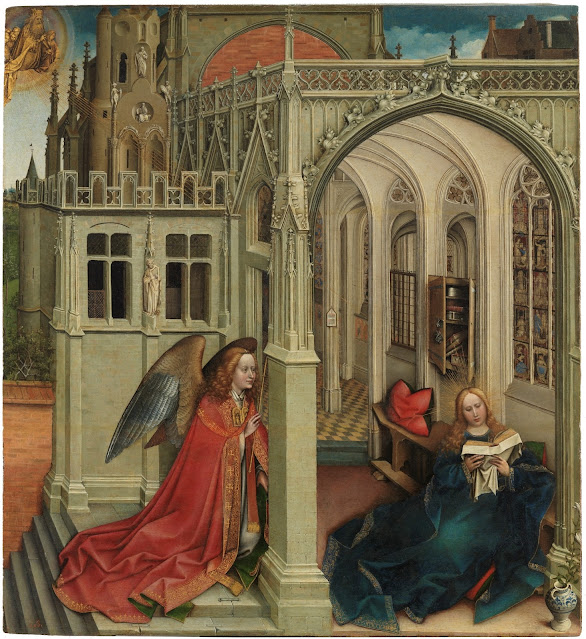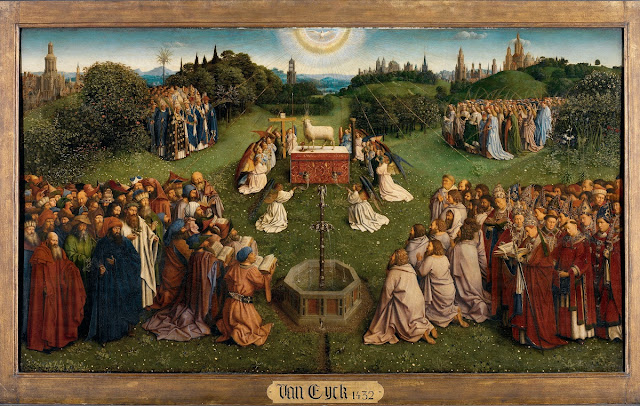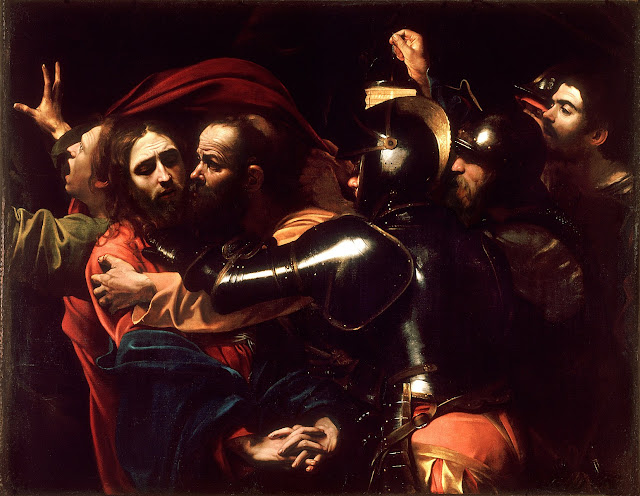The Annunciation in Art throughout the Ages

For the last day of religious art week, I want to focus on one of the most common subjects in Christian artistic tradition: The Annunciation. This term refers to a passage from the Gospel of Luke that describes the angel Gabriel coming to the Virgin Mary to tell her that she will give birth to the son of God and his name will be Jesus: And in the sixth month the angel Gabriel was sent from God unto a city of Galilee, named Nazareth, to a virgin espoused to a man whose name was Joseph, of the house of David; and the virgin's name was Mary. And the angel came in unto her, and said, Hail, thou that art highly favoured, the Lord is with thee: blessed art thou among women. And when she saw him, she was troubled at his saying, and cast in her mind what manner of salutation this should be. And the angel said unto her, Fear not, Mary: for thou hast found favour with God. And, behold, thou shalt conceive in thy womb, and bring forth a son, and shalt call his name Jesus. Luke 1:26-31 In art,...





